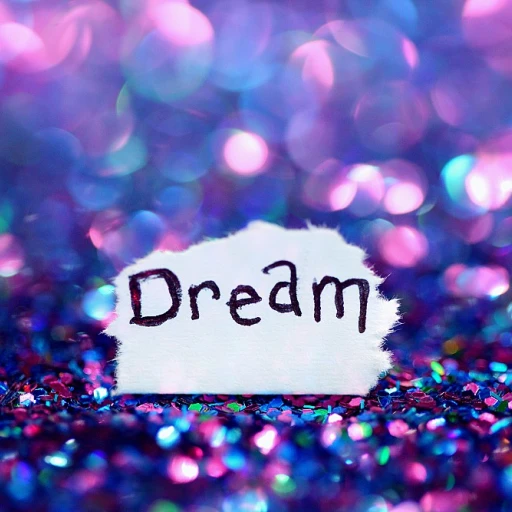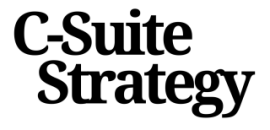
Creativity as a Competitive Edge in Business
The Powerhouse of Creativity in Business
Imagine a world where businesses operate not merely by the numbers but with a pulse of artistic brilliance, a place where creativity isn't just an added bonus, it's the linchpin of their competitive edge. In the narrative of modern business, those who dare to embed creative thinking and innovation into their strategy not only stand out but also set the pace. Benefiting from an uptick in innovative ideas, businesses are equipped to solve complex problems and adapt swiftly to an evolving market.
Drawing Upon Human Ingenuity
At work, it's the people—their rich tapestry of experience—that fuel the fires of creativity. Accessing the treasure trove that is human intelligence and divergent thinking, buoys a company's ability to foresee and forge new frontiers. A sturdy brand management strategy must hinge on this creative prowess.
Pathway to Unlocking Creativity
Unearthing the creative process within the workplace hinges upon recognizing that this isn't a linear path. Ideas often sprout unexpectedly, through what psychologists tag as the default mode network of the brain, an engine room where the mind wanders and solutions emerge. According to Harvard Business School research, encouraging daydreaming and free-thinking among employees can unleash creative problem solving abilities not tapped into during the regular churn of daily tasks.
A Synergy of Creativity and Business Acumen
Integrating creativity isn't about ignoring metrics or analysis; rather, it entails a harmonious blend. Great leaders know that while data lays the foundation, a twist of creativity—be it the fresh perspective of a new team member or the unexpected insights from a design thinking session—can be the catalyst for transcending conventional business solutions. Experts such as Alfred North Whitehead and Margaret Boden have long emphasized the symbiosis of creative flair and strategic thought.
The Mechanics of Creative Intelligence in Strategy Formation
Dissecting the Creative Mind in Strategic Decision-Making
Have you ever pondered how the sparks of creativity illuminate the path to strategic milestones? It isn't just a splash of color on a routine canvas; it's the very essence that drives innovation in today's cutthroat business arena. When creativity meets strategic planning, we witness the birth of groundbreaking ideas that can redefine industry standards.
George Land's transformation theory suggests creativity declines with age, yet businesses are proving that a structured approach to nurturing creative intelligence can buck this trend. Intelligence, as outlined by psychologists like J.P. Guilford, isn't a singular path but rather a web of divergent and convergent thinking, both indispensable in strategy formation. Guilford's structure of intellect model provides a blueprint for leveraging various intellectual abilities in problem-solving and ideation processes crucial for business strategies.
Strategic Insight Through Creative Lens
Mark A. Runco, a revered figure in creativity research, posits that the creative process isn't exclusive to so-called geniuses. Rather, it's a democratic trait present across human cognition. In applying this to strategic planning, Runco's assertion promotes the view that with the right environment and stimuli, every team member can contribute inventive solutions.
Brand mastery, for instance, greatly benefits from the marriage of creative thought and strategic insight. It's not just about the look and feel of a brand but also its strategic positioning and the innovative ways it engages with its customers.
Innovative Frameworks and Divergent Pathways
There's a tangible shift in businesses embracing methodologies like design thinking, which places humanity at the core of innovative endeavors. Implementing a design thinking framework stimulates divergent pathways of problem-solving. Such approaches have prompted companies to reconstruct their strategies around the human experience, leading to more empathetic and customer-centric solutions.
Reports from institutions like Harvard Business School reflect on the surge of companies integrating design thinking into their strategic planning, with success stories highlighting enhanced problem-solving capabilities and improved customer engagement metrics.
Integrating Creative Intelligence with Business Analytics
Striking a balance between creativity and analytical rigor may seem challenging, but it's a sweet spot for strategic innovation. The frontal lobe, the brain's command center for creative thinking, needs to synergize with data-driven insights to formulate effective strategies. This integration boosts decision-making efficiency, marrying intuition with evidence-based practices. Studies by Cambridge University Press and the American Psychological Association provide empirical support that data, when blended with creative intelligence, empowers businesses to hatch robust strategies and pioneering ventures.
Oscillating Between Creativity and Logical Rigor
The relationship between creativity and intelligence is not a contentious duality but a harmonious alliance. Through the lens of Arthur Koestler's theory of bisociation, we see that the most impactful ideas often occur at the intersection of disparate thinking styles. In the realm of business, this translates to oscillation between lateral, creative thinking, and the linear, logical processes that are both vital to the development of a comprehensive strategy.
The genius is not in choosing creativity over analytics or vice versa but in fostering an environment where both can co-exist and inform each other, yielding strategic insights that are both imaginative and pragmatically sound.
Case Study: Creative Catalysts in Action
Fostering Originality for Strategic Milestones
When businesses infuse creativity into their strategy, they're not just painting outside the lines; they're redrawing the whole canvas. This is where creative catalysts come into play, bringing a spark to the strategic process. We're talking about folks who do not just see things as they are but as they could be. Think of J.P. Guilford or Margaret Boden, whose research helped dissect the creative maze in the human brain, showing that logic and magic can coexist in problem-solving.
Creative Breakthroughs and Real-World Profit
Here's the scoop, illustrated by hard data and case studies. Companies known for their ingenuity, like those coming out of Harvard Business School, illustrate that fostering creative work environments can lead to an average of 1.5 times higher revenue growth. This isn't just a correlation; it's about linking the dots between a space where ideas bloom and the bottom line that drives business forward.
Take Google, for example. Their '20% time' philosophy – where employees can spend 20% of their time working on personal projects – bred innovations like Gmail and AdSense, deeply impacting the tech landscape. That's the kind of inventive gusto that redefines a market.
Intelligence and Creativity Crossing Paths
Understanding the tango between intelligence and creativity is akin to figuring out a dance routine - it's all about rhythm and flow. Studies often mention the default mode network in the brain, the backstage where our minds wander and daydreams become the seeds of the next big thing. But it's not just a walk in the clouds; Cambridge University Press punts evidence that when the frontal lobe gets cracking, creativity is not far behind, solving problems with a style that's both swanky and sophisticated.
It's not only about being born with it; it's about honing the genius within. Someone's got to scoop up all those sparks and give them structure - enter the creative process. Consider Alfred North Whitehead's notion of structured creativity. Having frameworks in place can provide a fertile ground for ideas to germinate and take root, flourishing into game-changing innovations.
The Role of Creative Catalysts
But who are these catalysts? Names like Isaac Newton or Steve Jobs come to mind. According to the American Psychological Association, these folks share a slice of both pie charts – high in creative thinking and intelligence. Their ability to connect disparate dots and pull rabbits out of hats sets them apart from the crowd.
They're the ones who don't just solve problems but find problems that we didn't even know existed. And then, they go ahead and solve them in a way that makes you wonder why no one else thought of it earlier. Remember, these mavericks aren't just winging it; they've got a laser focus on the creative process, respecting its every curve and edge. It's this blend of freedom and focus that lets them flip the script and turn problems into opportunities.
The Artful Dodges of Creative Humps
As with any story worth its salt, there's always a hurdle to clear. Whether it's the fear of failure or the comfort of conformity, creativity often faces contention in the corporate landscape. Reports on innovation obstruction suggest that around 75% of people think they are not living up to their creative potential, signaling that there is a wealth of untapped ingenuity ready to be harnessed.
It’s about breaking through the mental blocks, the divergent thinking barriers, and setting up systems that increase our creative problem-solving prowess. Take notes from Teresa Amabile's 'progress principle' that showcases how even the smallest wins can lead to mighty morale boosts in creativity.
Measuring Creativity's Impact on Business Outcomes
Unpacking the Value of Creative Solutions
It's tempting to view creativity as a nebulous concept, difficult to quantify within the rigors of business metrics. However, creativity is not only measurable, but its impact on business outcomes can be profound. Companies dedicated to fostering creativity often see a notable uptick in overall performance. Creative thinking leads to innovation, and innovation translates into a competitive advantage.
The Interplay between Creativity and Business Performance
When we dissect successful businesses, a pattern emerges: those that strike gold often do so by conceiving original ideas that resonate in the marketplace. According to a study by Forrester Consulting, companies that embrace creative thinking report 1.5 times higher market share. Another research by McKinsey found that firms scoring high on an 'innovation metric' outperformed industry norms in organic revenue growth.
Expert Approaches to Charting Creativity
Consulting giants like Harvard Business School offer deep dives into how creative processes can be structured within strategic planning. For instance, Roger Martin's 'Design Thinking' integrates human-centric problem-solving to unlock transformational strategies. Moreover, Amabile's Componential Theory of Creativity suggests that expertise, creative-thinking skills, and intrinsic motivation drive creativity in business.
Real-World Gains from Corporate Creativity
Look no further than companies like Apple and Google, which are often hailed for their innovation and creative approaches. These tech giants invest heavily in building environments conducive to creative thinking, and it's well-documented that such investments bear fruit. Apple's approach to design thinking is not only about aesthetics but ties directly to user experience, giving them an edge in customer loyalty and product success.
Quantitative Evidence of Creative Success
Data speaks where words cannot. Creative people are often behind the critical decisions that lead to big wins. For example, Nielsen's 'Breakthrough Innovation Report' points out that creative product innovation significantly contributes to lasting success in the market. Their extensive analysis of over 20,000 new products showed that only 92 were able to sustain growth over time, demonstrating the rarity and importance of truly creative ideas.
Assessing Creativity's Role in Solving Complex Challenges
In today's fast-paced environment, the ability to tackle complex business problems can be a clear indicator of a company's future success. Tools like the Torrance Tests of Creative Thinking help evaluate an individual's divergent thinking abilities—one of the cornerstones of idea generation and problem-solving. Companies that integrate such assessments into their operational strategies tend to identify and address potential issues much more efficiently.
The Economic Implications of a Creative Workforce
The link between a company's creativity and its economic performance isn’t just theory. Based on reports by Adobe and Forrester, companies encouraging creative work practices are 3.5 times more likely to achieve revenue growth of 10% or more than their peers. This figure underscores the potent potential of espousing creative thinking in achieving more than just industry buzz—it leads to quantifiable financial success.
Encouraging a Culture of Innovation Within the Workplace
Fostering an Environment for Breakthrough Ideas
Now, let's shift our focus toward the workplace – the very ground where creative seeds must be sown and nurtured. It's one thing to tout the importance of creativity in verbose mission statements, yet quite another to actually weave it into the fabric of daily work life. But how do companies translate well-meaning rhetoric into concrete reality? It starts with setting the stage for innovation.
Balancing Freedom with Structure
At the heart of a creative workplace is the delicate balance between freedom and structure. Statistically speaking, American Psychological Association studies indicate that when employees feel autonomous, they're more likely to bring creative solutions to the table. Yet, without a framework to channel their ideas, this creativity can run rampant and unfocused. Businesses with an eye for innovation provide clear objectives and leave the 'how' to the imaginative prowess of their teams.
Valuing Diverse Perspectives
Thought diversity is the fuel for creative fires. A blend of backgrounds, disciplines, and ways of thinking can spawn ideas that are the lifeblood of business evolution. As Margaret Boden, a revered scholar in the field of creativity research, suggests, creative ideas often emerge from the cross-pollination of different domains of knowledge.
Creating Psychological Safety Nets
The Harvard Business School has underscored the importance of psychological safety in workplaces that thrive on creativity. The idea is simple: people will only share their most innovative ideas if they know they won't be ridiculed or dismissed. Team leaders need to lead by example, taking intelligent risks and encouraging others to voice their thoughts without fear.
Enabling Collaborative Idea Generation
It’s often through a synergetic mix of solitary muse and collaborative exchanges that the most groundbreaking concepts materialize. The design thinking process, which necessitates iterative loops of ideation and feedback from various stakeholders, underscores the significance of this collaborative approach. Workplaces that facilitate such a dynamic are often the ones leading the charge in innovation.
Investing in Professional Development
Ongoing learning is synonymous with ongoing creativity. Encouraging employees to develop new skills, whether through formal training or side projects related to their interests, can lead to a renaissance of innovation. Companies that prioritize employee growth are essentially cultivating a garden where new ideas can flourish.
Recognizing and Rewarding Creative Efforts
Last but certainly not least, recognition plays a pivotal role in motivating employees to think outside the proverbial box. By highlighting and rewarding innovative thinking, companies don't just celebrate individual contributions; they broadcast a powerful message that creativity is not just welcome – it's wanted.
Overcoming Obstacles to Creative Thinking in Companies
Busting Barriers to Breakthroughs
Let's tackle the tough stuff, shall we? Creative thinking in the corporate world isn't just about having a ping-pong table in the break room or tossing around a few 'out-of-the-box' ideas during meetings. It's more intricate, involving a delicate dance with our own cognitive patterns and the workplace environment that often works more like a straitjacket than a sandbox for the mind.
Dissecting the Creativity Quashers
At some point, everyone's hit that frustrating wall where, despite knowing that innovation is critical, they just can't seem to light the spark. A Harvard Business School report notes that excessive bureaucracy and rigid corporate policies are creativity's kryptonite. Imagine trying to paint a masterpiece, but first, you gotta fill out a form for each brushstroke! A study from Cambridge University Press backs this up, showing that structures meant to streamline processes can paradoxically stiffle the ability to produce creative ideas.
Embracing Divergent Thinking
Sterile think-tanks won't cut it. Divergent thinking—generating lots of different ideas—is like the creative muscle that you wanna flex. Psychology tells us it's linked to the mind's default mode network, which gets lively when we daydream or let our minds wander. A piece of insight here from the American Psychological Association confirms: giving teams the time and mental space to explore is pivotal. This shows up in how successful businesses aren't afraid to let teams have 'off-the-script' time to just think.
The Psychological Safety Net
Now here's a nugget of wisdom from Teresa Amabile, straight from the halls of Stanford Encyclopedia of Philosophy—she points to the human side of creativity, emphasizing the need for a safe space to take risks without the fear of failures being career-enders. When people feel psychologically safe, they're more likely to contribute whacky, genius, or unpolished ideas that could be the seedlings of major innovation.
Designing a Detour Around Mental Blocks
So, how do we sidestep these blocks? Margret Boden wrote about creative ideas and suggested institutionalized permissions for breaking routine, almost giving a 'license to deviate' from the norm. Alfred North Whitehead, another brainy bloke, he went on about the importance of letting ideas marinate and not dismissing them prematurely. George Land's transformational theory whips up this smoothie of concepts and suggests that companies need a sort of 'mental incubation period' for ideas.
The Genius of an Inclusive Approach
Let's drop another truth bomb by spotlighting diversity. A report by Harvard Business School uncovers that teams with a wide range of experiences bring a whole palette of perspectives to the problem-solving canvas. It's about mixing it up, people! When you have different brains in the room, from different walks of life, you get this mash-up of know-how that can propel creative thinking at warp speed.
Marrying Analytics with Artistry
And here's where it gets real spicy. Mixing the clear-cut world of analytics with the abstract art of creative thought. The relationship between creativity and intelligence, as showcased by the findings from the Merriam-Webster creativity yardstick, suggests they're two peas in a pod. So when you get analytical minds to romp in the creative playpen, you're engineering an intelligence that's custom-built to kick down the brick walls stonewalling innovation.
Future-proofing Through Creative Adaptability
Navigating the Waves of Change with Creative Adaptability
Change is not just a buzzword in the business landscape—it's the drumbeat of a relentless march towards the future. But how does one keep step with this rhythm? The answer lies in a company's creative adaptability, its ability to pivot at a moment's notice without missing a beat. It's about having a workforce that's not just skilled at what they do, but one with the knack for bending without breaking in the winds of change.
Adaptable Creativity: The New Age Armor
As businesses face unprecedented levels of disruption, those poised to thrive are the ones equipped with 'adaptable creativity.' They foster an environment where creativity in the workplace blooms, encouraging flexible thinking and a readiness to toss out the old script in favor of innovative approaches. Stats show that companies promoting creativity see an increase in employee satisfaction and, as a bonus, a boost in productivity and problem-solving capacity.
The Human Edge: Creative Problem Solving at the Forefront
When automation and AI take on the repetitive tasks, it's the uniquely human genius for problem-solving that stands out. In such a landscape, creativity isn't just about generating ideas—it's about synthesis, the convergence of knowledge, and the divergent thinking that leads to breakthroughs. According to reports, including the American Psychological Association, the organizations that invest in developing the creative problem-solving skills of their people are the ones outpacing their competitors.
Real-world Insights: The Proof is in the Pudding
Case studies across industries reveal that businesses that have baked creative adaptability into their strategy exhibit resilience in the face of market volatility. For instance, companies entrenched in design thinking routinely outperform their peers, suggesting there's a strong correlation between the adoption of creative processes and long-term business success.
Creative Adaptability as a Predictor of Future Success
Trends indicate that the ability to harness creativity is no longer optional but a quintessential trait of successful businesses. It's a significant predictor of a company's ability to operate sustainably and with agility. Those that fail to evolve their creative capacities are more likely to falter in the wake of change, unable to match the pace set by more creatively intelligent rivals.
Conclusion: Embracing Change with a Creative Mindset
In the grand scheme, fostering creativity is not merely a one-off initiative but a continuous, strategic effort that demands attention at all levels of an organization. As businesses look ahead, they must weave the threads of creativity into the fabric of their culture, future-proofing themselves against the unpredictable tides of the business world.
Harnessing the Creative Genius in Leadership for Strategic Wins
Empowerment Through Creativity in Strategic Leadership
At the helm of every progressive business lies a leader with a vision, one often steered by a creative compass. Named by the Harvard Business School as paramount for growth and innovation, creativity in leadership isn’t just about having groundbreaking ideas, but about fostering an environment where such ideas can flourish. It’s no longer a hush-hush secret that creative leaders tend to spearhead the most successful strategic endeavors.
Integrating Creativity With Analytical Thinking
While the nitty-gritty of charts and data drive many corporate strategies, they're not the be-all and end-all. The American Psychological Association emphasizes the need for a balance between divergent and convergent thinking within decision-making frameworks. Creative leaders excel at this by juxtaposing out-of-the-box ideation with critical analysis, ensuring businesses don't just thrive on tradition but also innovate beyond boundaries.
From Insights to Execution: Realizing the Creative Leap
Ideas alone don't shoulder the future of a business—execution does. Leaping from insight to implementation demands a specific creative alacrity, something George Land’s transformation theory discusses in-depth. Land reveals that 98% of young people score at the 'genius' level for creativity, yet this plummets as people grow older. Strategic leaders often revive this latent creative prowess, translating intangible ideas into actionable strategies that edge the business forward.
Navigating the Creative Mindset in Business Strategy
The dynamics of a successful strategy often hinge on the psychological elasticity of its leaders. It's not enough to acknowledge the presence of creative minds like Isaac Newton or J.P. Guilford in the annals of history; it’s about harnessing similar innovative brainpower in the boardroom. Cambridge University Press underscores the pivot toward a human-centric approach in strategic decision-making, which allows for a more nimble and responsive business trajectory.
Creative Leadership: A Case for Strategic Victory
Tales of strategic victories are often woven with threads of creative leadership. When you look at the giants of industry—the Harvard Business School alumni stories or the innovative paths trodden by start-ups—a common denominator stands out: leaders who dared to be different. They didn't just rely on intelligence or information; they embraced a creative vision that propelled their companies into new echelons of success.








